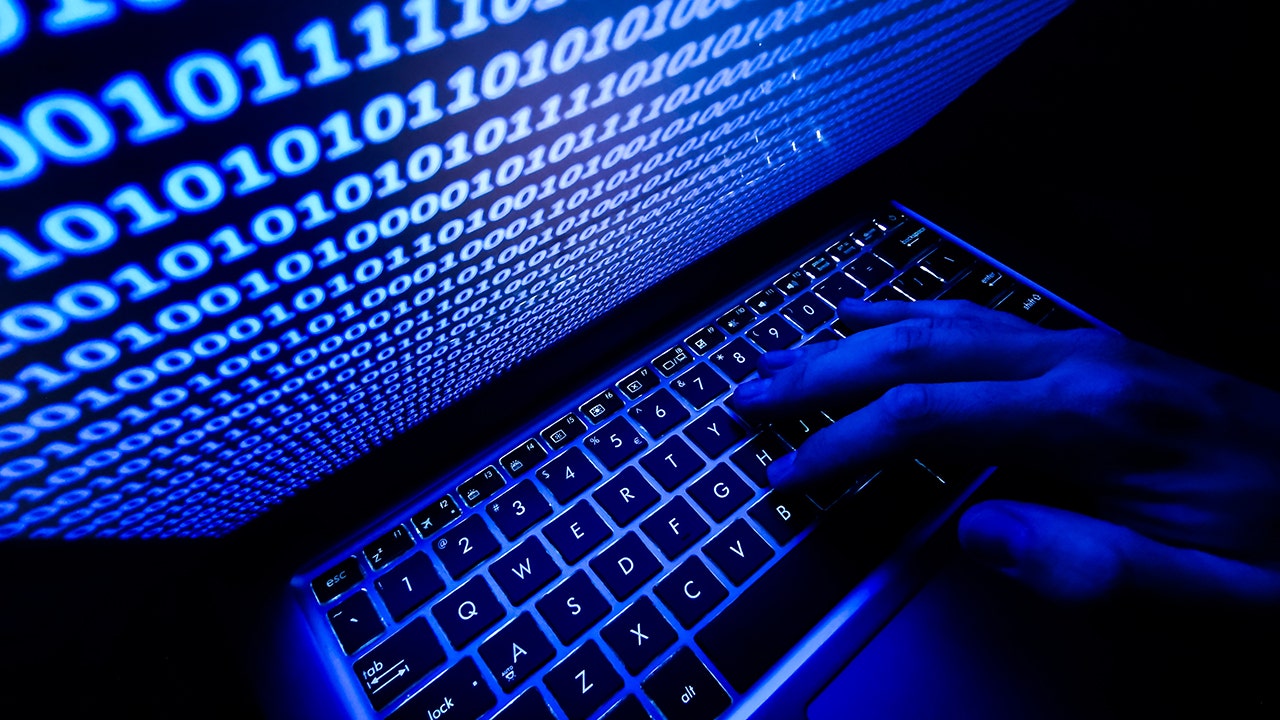If you live in Los Angeles, you are probably already intimately familiar with Watch Duty, the free app that shows active fires, mandatory evacuation zones, air quality indexes, wind direction, and a wealth of other information that everyone, from firefighters to regular people, have come to rely on during this week’s historic and devastating wildfires.
Technology
It never ends! What to do after a data breach

Ticketmaster, Advance Auto Parts, Santander Bank, ATT, Bank of America, file transfer service MOVEit, Trello and Discord. Those are just some of the major companies targeted in data breaches so far this year.
I’m giving away a $1,000 gift card to your favorite airline.
Try my free tech newsletter to enter!
It’s easy to ignore news of a data breach, I know. There are just so many that it all turns into white noise. The Change Healthcare hack alone exposed one-third of Americans. That’s either you or someone you love dearly.
So, what do you do if your data is exposed? Your No. 1 goal is to protect yourself from future scams.
OWN A HOME? SHOPPING OR SELLING? YOU’RE A SCAM TARGET
Do these things right away
Make a list of your data that was exposed.
Keep a document, Post-it, a note on your phone or whatever works for you. Be suspicious of anyone who references it in an email or phone call to prove they’re legit. Say your home address was leaked and someone contacts you about an issue with your mortgage. Yep, it’s probably a scam.
Watch your money.
Update your PIN and banking login credentials. Even if they weren’t involved directly in the breach, hackers can use your personal info to access it. Keep an eye on your bank and credit card statements.
Freeze your credit.
This will keep scammers from opening a credit card or loan in your name. Like setting up a fraud alert, you’ll need to contact each of the three credit bureaus. It takes a little work, but it’s a solid defense against criminals trying to ruin your financial future.
While data breach news is easy to ignore, the long-term consequences of these breaches on everyday Americans are anything but. (Jakub Porzycki/NurPhoto via Getty Images)
Crooks love to play the long game
They’ll wait until your guard is down and target you months after the initial breach.
This is part of the reason so many people fall for phishing scams. The crooks are going into text, call and email exchanges with a lot of ammo.
- Be wary of any email requests. Even if a request is legit, it’s OK to take your time to figure it out. If it’s the first you’re hearing of something (like wiring your boss a bunch of money), it’s not urgent. Better safe than sorry.
- Watch out for healthcare-related requests. If you receive an explanation of benefits (EOB) or a bill for services you didn’t receive, contact your healthcare provider and insurance company right away. Someone else may have gotten those services using your name.
- If you get an out-of-the-blue message from an old friend, be extremely cautious. Hackers love to use your info to pose as friends or family. These often start with an innocent-seeming text. Ignore texts from strangers who pretend to have the wrong number and want to chat, too.
10 VOICE SCAMS TO WATCH OUT FOR – AND YOUR QUICK ACTION PLAN
What about when passwords are revealed?
On July 4, Hackers posted a file named RockYou2024.txt to a dark web forum. The file includes a mind-numbing 9,948,575,739 passwords. And there’s a very good chance it puts you at risk. The RockYou2024 leak is made up of passwords from both old and new data breaches.
It’s one thing when criminals have your name, phone number and financial details. Having access to your passwords is a whole different ball game.
The tactic is called credential stuffing
This is when crooks take your leaked passwords and try to break into as many services, sites, accounts and apps as they can. They’re hoping you got lazy at least once and reused that password somewhere else.

Hackers can take your leaked passwords and try to use them to brute-force their way into as many of your accounts as they can. (Photo by Silas Stein/picture alliance via Getty Images)
Any system that isn’t protected against brute-force attacks is at risk, and this goes beyond smartphones and computers. Even internet-connected cameras and industrial equipment are on the hackable list.
What are your next steps?
Visit Cybernews’ Leaked Password Checker to see if your passwords were exposed. HaveIBeenPwned is another option. Enter your email address into either one, and I’ll bet you’ll find yourself on the list.
Now the hard part: Reset the passwords for every single account associated with those leaked passwords.
20 TECH TRICKS TO MAKE LIFE BETTER, SAFER OR EASIER
Your browser can help
Your browser’s password manager can alert you if your passwords have been involved in a breach. Here’s how to view or enable this feature in three popular browsers:
- Google Chrome: Password alerts are enabled by default. If you think you might’ve missed one, head to Google’s Password Manager and run a Password Checkup.
- Microsoft Edge: You’ll need to turn on Edge’s Password Monitor. To do this, go to Settings and more (the three-dot menu at the top right of your browser window) > Settings > Profiles > Passwords. Then, toggle on the switch for Show alerts when passwords are found in an online leak.
- Apple Safari: Password monitoring is on by default for browsers running on MacOS 14 or iOS 14 and later. To check for alerts on your iPhone or Mac, and to update any compromised passwords, go to Settings > Passwords > Security Recommendations > Change Password on Website.

Browser-based password managers are an easy way of monitoring your potential involvement in data breaches. (Photo illustration by Chesnot/Getty Images)
Oh, and this is important to remember: Any random two-factor authentication (2FA) codes you receive via email or text that you didn’t ask for could mean someone is trying to access your accounts.
Share this tip with someone you care about. Protecting others from scams starts with knowledge.
Get tech-smarter on your schedule
Award-winning host Kim Komando is your secret weapon for navigating tech.
Copyright 2024, WestStar Multimedia Entertainment. All rights reserved.

Technology
How Watch Duty’s wildfire tracking app became a crucial lifeline for LA
/cdn.vox-cdn.com/uploads/chorus_asset/file/25824833/STKB309_WATCH_DUTY_B.jpg)
Watch Duty is unique in the tech world in that it doesn’t care about user engagement, time spent, or ad sales. The 501(c)(3) nonprofit behind it only cares about the accuracy of the information it provides and the speed with which the service can deliver that information. The app itself has taken off, rocketing to the top of Apple’s and Google’s app stores. Over 1 million people have downloaded it over the last few days alone.
The elegance of the app lies in its simplicity. It doesn’t scrape user data, show ads, require any kind of login, or track your information. Its simple tech stack and UI — most of which is maintained by volunteer engineers and reporters — has likely helped save countless lives. While Watch Duty is free to use, the app accepts tax-deductible donations and offers two tiers of membership that unlock additional features, like a firefighting flight tracker and the ability to set alerts for more than four counties.
With plans to expand the service across the United States, as well as overseas and into other emergency services, Watch Duty may eventually replace some of the slower and less reliable local government alert systems for millions of people.
Photo by Lokman Vural Elibol / Anadolu via Getty Images
An app born from fire
The idea for Watch Duty came to cofounder John Mills while he was trying to protect his off-grid Sonoma County home from the Walbridge fire in 2020. He realized there wasn’t a single source for all the information people needed to protect themselves from the blaze, which ultimately killed 33 people and destroyed 156 homes. John and his friend David Merritt, who is Watch Duty’s cofounder and CTO, decided to build an app to help.
“This came out of an idea that John had, and he talked to me about it four years ago,” Merritt tells The Verge. “We built the app in 60 days, and it was run completely by volunteers, no full-time staff. It was a side project for a lot of engineers, so the aim was to keep it as simple as possible.”
Fire reporting is piecemeal at best in fire-prone areas and frequently scattered across platforms like Facebook and X, where fire departments and counties have verified pages sharing relevant updates. But increasingly, social media platforms are putting automated access for alert services behind paywalls. Governments also use a wide variety of alert systems, causing delays that can cost lives, especially in fast-moving fires like the Palisades and Eaton fires that have forced evacuations for more than 180,000 people. And sometimes, these government-run alerts are sent out mistakenly, causing mass confusion.
Watch Duty simplifies all that for millions of people.
“We view what we are doing as a public service,” says Merritt. “It is a utility that everyone should have, which is timely, relevant information for their safety during emergencies. Right now, it’s very scattered. Even the agencies themselves, which have the best intentions, their hands are tied by bureaucracy or contracts. We partner with government sources with a focus on firefighting.”
“We view what we are doing as a public service.”
One of the biggest issues around fires, in particular, is that they can move quickly and consume large swaths of land and structures in minutes. For example, the winds that drove the Palisades fire to spread to more than 10,000 acres reached 90 miles per hour on Tuesday. When minutes matter, the piecemeal alert system that Watch Duty replaces can cause delays that cost lives.
“Some of the delivery systems for push notifications and text messages that government agencies use had a 15-minute delay, which is not good for fire,” says Merritt. “We shoot to have push notifications out in under a minute. Right now, 1.5 million people in LA are getting push notifications through the app. That’s a lot of messages to send out in 60 seconds. In general, people are getting it pretty much all at the same time.”
A simple tech stack
For Watch Duty, this kind of mass communication requires reliable technology as well as a group of dedicated staff and skilled volunteers. Merritt says that Watch Duty relies on a number of corporate partners with whom it has relationships and contracts to provide its service.
“We shoot to have push notifications out in under a minute.”
The app is built on a mix of technology, including Google’s cloud platform, Amazon Web Services, Firebase, Fastly, and Heroku. Merritt says the app uses some AI, but only for internal routing of alerts and emails. Reporters at Watch Duty — those who listen to scanners and update the app with push notifications about everything from air drops to evacuation updates — are mostly volunteers who coordinate coverage via Slack.
“All information is vetted for quality over quantity,” he says. “We have a code of conduct for reporters. For example, we never report on injuries or give specific addresses. It’s all tailored with a specific set of criteria. We don’t editorialize. We report on what we have heard on the scanners.”
According to Merritt, the app has 100 percent uptime. Even though it started with volunteer engineers, the nonprofit has slowly added more full-time people. “We still have volunteers helping us, but it’s becoming more on the internal paid staff as we grow, as things get more complex, and as we have more rigorous processes,” he says.
“All information is vetted for quality over quantity.”
He says there are no plans to ever charge for the app or scrape user data. The approach is kind of the Field of Dreams method to building a free app that saves people’s lives: if you build it well, the funding will come.
“It’s the antithesis of what a lot of tech does,” Merritt says. “We don’t want you to spend time in the app. You get information and get out. We have the option of adding more photos, but we limit those to the ones that provide different views of a fire we have been tracking. We don’t want people doom scrolling.”
Photo by FREDERIC J. BROWN / AFP via Getty Images
Collecting information in the era of Trump
Watch Duty relies heavily on publicly available information from places like the National Weather Service and the Environmental Protection Agency. Should the incoming Trump administration decide to execute on threats to dismantle and disband the EPA (which monitors air quality) and the National Oceanic and Atmospheric Administration, the parent agency to the National Weather Service, such moves would impact Watch Duty’s ability to operate.
Even still, Merritt is optimistic. “We will be pretty well insulated from any change to policy,” he says. “We are either buying that information ourselves already or we are happy to buy it, and we will take that cost on. The fact that we’re soon going to be covering the entire US will defray the cost of anything that shifts from a policy perspective. Our operation costs are mostly salaries. We are trying to hire really good engineers and have a really solid platform. If we need to raise a grant to buy data from the National Weather Service, then we will.”
Regardless of what the next administration does, it’s clear that Watch Duty has become a critical and necessary app for those in Southern California right now. The app currently covers 22 states and plans to roll out nationwide soon.
“We got 1.4 million app downloads in the last few days,” according to Merritt. “I think we have only received 60 support tickets, so that shows that something is working there. We are really just focused on the delivery of this information.”
Technology
China’s newest humanoid robot is ready to serve like never before

Chinese startup Pudu Robotics has unveiled its latest creation, the D9 humanoid robot, designed to revolutionize the way we work and interact with machines.
Standing at an impressive 5.57 feet tall, this bipedal machine is not just another robot — it’s a versatile assistant ready to tackle a wide range of tasks in various settings.
D9 humanoid robot. (Pudu Robotics)
Capabilities and features of the humanoid robot
The D9 is no ordinary robot. With its ability to walk upright and carry loads up to 44 pounds, it’s built to handle real-world challenges. But what sets it apart from its predecessors?
I’M GIVING AWAY THE LATEST & GREATEST AIRPODS PRO 2
Advanced mobility: The D9 can walk at speeds of up to 4.5 mph, outpacing the average human stroll. It’s not just about speed, though. This robot can navigate stairs, slopes and even maintain balance when knocked off-kilter.
Intelligent navigation: Equipped with high-accuracy sensors, the D9 creates real-time 3D semantic maps of its surroundings. This allows for autonomous route planning and precise self-positioning.
Versatile applications: From performing ground cleaning tasks with the Pudu SH1 to carrying boxes in warehouses and stocking shelves in stores, the D9’s potential applications are vast.
Natural interaction: Perhaps most impressively, the D9 boasts “human-level multimodal natural interactions,” thanks to its sophisticated artificial intelligence processing frameworks.

D9 humanoid robot. (Pudu Robotics)
AI-POWERED ROBOT SINKS SEEMINGLY IMPOSSIBLE BASKETBALL HOOPS
The evolution of Pudu robotics
The D9 isn’t Pudu’s first foray into robotics. In September, they introduced the D7, a semi-humanoid robot on wheels designed for tasks like sorting components, serving in restaurants and operating elevators. The D9 builds on this foundation, expanding the range of possible applications.
WHAT IS ARTIFICIAL INTELLIGENCE (AI)?

D9 humanoid robot. (Pudu Robotics)
CHINESE HUMANOID ROBOT COULD BE THE FUTURE OF AFFORDABLE IN-HOME CARE
Competitive landscape
With the introduction of the D9, Pudu Robotics enters a competitive field alongside giants like Tesla and Unitree. While pricing details for the D9 are yet to be announced, it’s speculated to fall in the $20,000 to $30,000 range, similar to Tesla’s Optimus.

D9 humanoid robot. (Pudu Robotics)
ELECTRIC HUMANOID ROBOT POISED TO SHAKE UP THE JOB MARKET
Kurt’s key takeaways
The Pudu D9 showcases advanced mobility and intelligent interaction capabilities. As it prepares to enter the market, its potential impact on various industries could be profound, transforming how we approach tasks across sectors. The future looks promising for humanoid robots like the D9 as they pave the way for more efficient and interactive work environments.
What concerns do you have about the potential impact of humanoid robots like the Pudu D9 on the future of work and everyday life? Let us know by writing us at Cyberguy.com/Contact
For more of my tech tips and security alerts, subscribe to my free CyberGuy Report Newsletter by heading to Cyberguy.com/Newsletter
Ask Kurt a question or let us know what stories you’d like us to cover.
Follow Kurt on his social channels:
Answers to the most-asked CyberGuy questions:
New from Kurt:
Copyright 2025 CyberGuy.com. All rights reserved.
Technology
Intel still dreams of modular PCs — it brought a tablet laptop gaming handheld to CES
/cdn.vox-cdn.com/uploads/chorus_asset/file/25826491/PXL_20250106_223233485.jpg)
At CES 2025, Intel let journalists into its private “Innovation Showcase,” where we saw things like prototype next-gen laptops and giant stereo 3D handheld gaming PCs.
While I was there, I also spotted a heavy metal handheld on a table that didn’t seem… fully attached… to its screen. When I lifted the screen, it came away easily.
It felt suspiciously light to be a real tablet, so I flipped it over and saw three connectors underneath:
Above it, on a shelf, was a laptop with a suspiciously sized chunk of plastic on the bottom that looked like a perfect match. A minute later, Intel gaming evangelist Colin Helms confirmed: I was looking at a concept modular PC.
That module contains a complete Intel Lunar Lake computer, the entire guts you’d need to make one work outside of peripherals and screen. It’s basically a reboot of Intel’s abandoned Compute Card idea, except it’s not all Intel’s doing and you probably shouldn’t ever expect it to ship.
It’s a concept from Quanta, a company whose name you don’t typically see on the laptops and tablets they create, because Quanta is an ODM (like Compal, Pegatron, Wistron, and Apple’s better known iPhone supplier Foxconn) that designs and manufactures hardware on behalf of brand names.
Quanta’s calling the whole modular system the “AI8A,” and the aforementioned module at its heart is the “Detachable AI Core.” Helms told me it plugs into other concept computers as well, including an all-in-one desktop that Intel didn’t have to show off. And presumably, like the Compute Card idea, you could upgrade your computer just by putting a new new module into it.
The modular laptop has lots of concept-y bells and whistles too, so many that Intel’s CES staff hadn’t even worked them all out yet.
For starts, the laptop has a motorized hinge, so you can tell it to open and close its own lid; it also claims to offer eye-tracking that lets you sling around multitasking windows just by looking at where you’d like them to be. It apparently comes with a mouse integrated into a ring that you could wear.
The most mundane: a built-in Qi wireless charging pad in the palmrest, with indicator lights to show your battery’s remaining capacity.
I couldn’t try any of it working, unfortunately, nor did I manage to ask what “AI8A” means, because I mistakenly thought it said Aiba until I checked my photos closely just now. Nor could we hotswap the module between the handheld and laptop, since the module apparently doesn’t have a battery inside.
Again, this is a cool computing concept car: it’s not likely that this computer will ever ship, even in a more practical / less gadgety form. Thankfully, we have begun to see some real, practical modularity in the laptop space since the death of Intel’s Compute Card. Framework just celebrated its fifth anniversary this week, and Dell took a smaller step forward at CES with its first modular repairable USB-C port.
Photos by Sean Hollister / The Verge
-

 Politics1 week ago
Politics1 week agoNew Orleans attacker had 'remote detonator' for explosives in French Quarter, Biden says
-

 Politics1 week ago
Politics1 week agoCarter's judicial picks reshaped the federal bench across the country
-

 Politics1 week ago
Politics1 week agoWho Are the Recipients of the Presidential Medal of Freedom?
-

 Health6 days ago
Health6 days agoOzempic ‘microdosing’ is the new weight-loss trend: Should you try it?
-

 World1 week ago
World1 week agoSouth Korea extends Boeing 737-800 inspections as Jeju Air wreckage lifted
-
/cdn.vox-cdn.com/uploads/chorus_asset/file/25822586/STK169_ZUCKERBERG_MAGA_STKS491_CVIRGINIA_A.jpg)
/cdn.vox-cdn.com/uploads/chorus_asset/file/25822586/STK169_ZUCKERBERG_MAGA_STKS491_CVIRGINIA_A.jpg) Technology3 days ago
Technology3 days agoMeta is highlighting a splintering global approach to online speech
-

 World1 week ago
World1 week agoWeather warnings as freezing temperatures hit United Kingdom
-

 News1 week ago
News1 week agoSeeking to heal the country, Jimmy Carter pardoned men who evaded the Vietnam War draft














